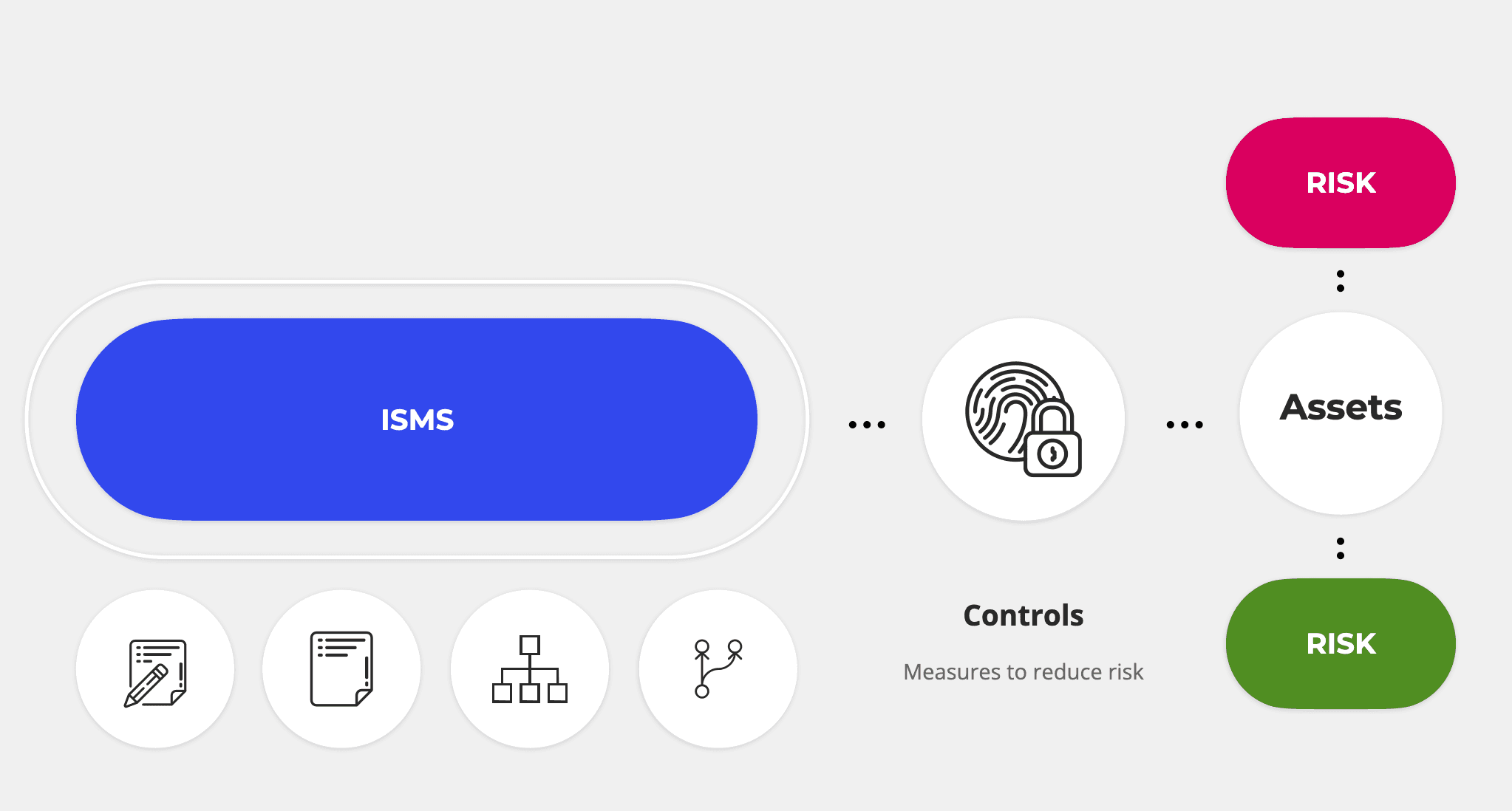ISO/IEC 27001 is a widely recognized international standard that sets out the requirements for establishing, implementing, maintaining, and continually improving an Information Security Management System (ISMS). As the centerpiece of the ISO 27000 family of standards, ISO/IEC 27001 provides a robust framework for managing sensitive company information, helping to ensure its confidentiality, integrity, and availability. This article offers a detailed overview of ISO 27001, its purpose, and table of contents.
What is ISO 27001?
ISO/EC 27001:2022, titled as "Information security, cybersecurity and privacy protection — Information security management systems — Requirements" is an international standard jointly published by the International Organization for Standardization (ISO) and the International Electrotechnical Commission (IEC). The “27001” in its name is a unique identifier for the standard, and the year following the colon denotes the specific revision. The current version, as of this writing, is ISO/IEC 27001:2022.

ISO 27001 is at the core of the ISO 27000 family of standards, which focuses on information security management. It outlines the criteria for creating a comprehensive ISMS to protect information assets from risks and threats. This standard is highly sought after by organizations worldwide due to its effectiveness in managing information security and providing assurance to stakeholders.
The Purpose of ISO 27001
Organizations today face numerous risks to their information assets, particularly in the areas defined by the CIA triad: Confidentiality, Integrity, and Availability. To safeguard these assets, organizations need a systematic approach to managing information security, which is precisely what ISO 27001 offers.
The standard ensures that organizations:
Identify Information Security Risks: Understand the potential threats and vulnerabilities that could impact their information assets.
Implement Controls: Use a set of policies, procedures, guidelines, and resources to protect against identified risks.
Reduce Risk Levels: Minimize the likelihood of security incidents and help organizations achieve their business objectives.
By adhering to ISO 27001, organizations can establish a structured ISMS that protects their sensitive information, helps maintain customer trust, and meets regulatory and legal requirements.

Table of Contents of ISO 27001
ISO 27001 adopts a high-level structure (HLS), which aligns with other ISO management system standards, facilitating integration with other systems like ISO 9001 (Quality Management) and ISO 14001 (Environmental Management).
The HLS consists of ten main sections:
Scope: Defines the boundaries and applicability of the ISMS.
Normative References: Lists other standards referred to within ISO 27001.
Terms and Definitions: Provides definitions for key terms used in the standard.
Context of the Organization: Establishes the context in which the ISMS will operate, including understanding the organization’s external and internal environment.
Leadership: Emphasizes the importance of leadership commitment and establishing an information security policy.
Planning: Involves identifying risks and opportunities, setting information security objectives, and planning actions to address them.
Support: Covers the necessary resources, competencies, awareness, communication, and documented information required for the ISMS.
Operation: Focuses on implementing and managing the ISMS processes, controls, and other measures.
Performance Evaluation: Describes the methods for monitoring, measuring, analyzing, and evaluating the effectiveness of the ISMS.
Improvement: Outlines the requirements for continual improvement of the ISMS, including the management of nonconformities and corrective actions.
The standard also contains an annex with a set of reference controls that can be used to treat identified risks. More information about Annex A can be found in this article: Annex-A

ISO 27001 and the PDCA Cycle
ISO 27001 incorporates the principles of the Plan-Do-Check-Act (PDCA) cycle, a continuous improvement model also known as the Deming Cycle. This cycle ensures that the ISMS is continually evolving to meet the changing security landscape:
Plan: Identify security risks and establish objectives and processes necessary to deliver results in accordance with the organization’s information security policy.
Do: Implement the plans, processes, and controls.
Check: Monitor and measure the performance of the ISMS against the information security objectives, report results, and conduct audits.
Act: Take corrective actions based on the performance evaluation to continually improve the ISMS.
Key Chapters of ISO 27001
Chapters 4, 5, and 6: These chapters focus on setting the direction for the organization in terms of information security. They deal with understanding the organization’s context, securing leadership commitment, and planning to address risks and opportunities.
Chapters 7 and 8: These chapters outline the execution of the ISMS. They cover the resources needed, the competencies required, awareness and training programs, and operational control of information security processes.
Chapter 9: This chapter is about performance evaluation. It emphasizes monitoring, measuring, analyzing, and evaluating the effectiveness of the ISMS. It includes internal audits and management reviews to assess compliance and performance.
Chapter 10: The final chapter focuses on improvement. It encourages organizations to continually improve the ISMS by addressing nonconformities, implementing corrective actions, and making systemic changes as needed.
Conclusion
ISO 27001 provides a comprehensive framework for managing information security risks and safeguarding information assets. By implementing ISO 27001, organizations can ensure the confidentiality, integrity, and availability of their information, which is critical for maintaining trust and achieving business objectives. Understanding the structure, purpose, and implementation process of ISO 27001 is essential for organizations aiming to establish a robust Information Security Management System and achieve certification.


